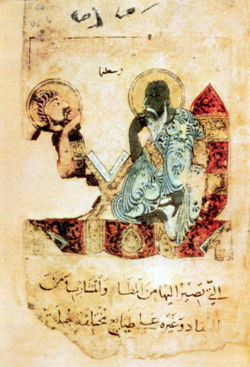
Ibn Sina, commonly known in the West as Avicenna, was a Persian polymath who is regarded as one of the most significant physicians, astronomers, philosophers, and writers of the Islamic Golden Age, and the father of early modern medicine. Sajjad H. Rizvi has called Avicenna "arguably the most influential philosopher of the pre-modern era". He was a Muslim Peripatetic philosopher influenced by Greek Aristotelian philosophy. Of the 450 works he is believed to have written, around 240 have survived, including 150 on philosophy and 40 on medicine.
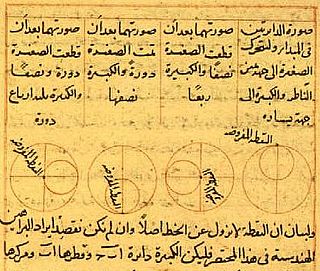
Science in the medieval Islamic world was the science developed and practised during the Islamic Golden Age under the Umayyads of Córdoba, the Abbadids of Seville, the Samanids, the Ziyarids, the Buyids in Persia, the Abbasid Caliphate and beyond, spanning the period roughly between 786 and 1258. Islamic scientific achievements encompassed a wide range of subject areas, especially astronomy, mathematics, and medicine. Other subjects of scientific inquiry included alchemy and chemistry, botany and agronomy, geography and cartography, ophthalmology, pharmacology, physics, and zoology.

Hunayn ibn Ishaq al-Ibadi ( Arabic: أبو زيد حنين بن إسحاق العبادي; ʾAbū Zayd Ḥunayn ibn ʾIsḥāq al-ʿIbādī was an influential Nestorian Christian translator, scholar, physician, and scientist. During the apex of the Islamic Abbasid era, he worked with a group of translators, among whom were Abū 'Uthmān al-Dimashqi, Ibn Mūsā al-Nawbakhti, and Thābit ibn Qurra, to translate books of philosophy and classical Greek and Persian texts into Arabic and Syriac.
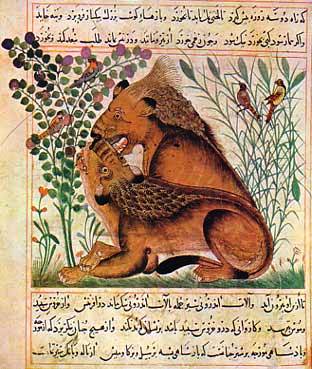
The Bukhtīshūʿ were a family of either Persian or Nestorian Christian physicians from the 7th, 8th, and 9th centuries, spanning six generations and 250 years. The Middle Persian-Syriac name which can be found as early as at the beginning of the 5th century refers to the eponymous ancestor of this "Syro-Persian Nestorian family". Some members of the family served as the personal physicians of Caliphs. Jurjis son of Bukht-Yishu was awarded 10,000 dinars by al-Mansur after attending to his malady in 765AD. It is even said that one of the members of this family was received as physician to Imam Sajjad during his illness in the events of Karbala.
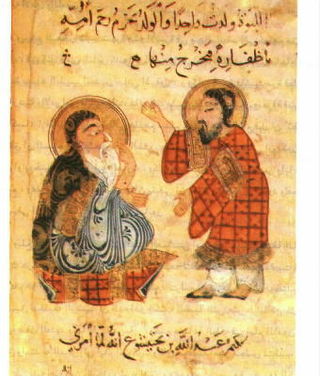
Abu Sa'id 'Ubayd Allah ibn Bakhtishu (980–1060), also spelled Bukhtishu, Bukhtyashu, and Bakhtshooa in many texts, was an 11th-century Syriac physician, descendant of Bakhtshooa Gondishapoori. He spoke the Syriac language.

Burhan-ud-Din Kermani or Burhān al-Din Nafīs ibn ‘Iwad al-Kirmanī was a 15th-century Persian physician from Kerman. He was court physician to Ulugh Beg, the grandson of Tamerlane and the governor of Samarqand from 1409 to 1449.

Abu Mansur al-Hasan ibn Nuh al-Qumri was a Persian court physician to the Samanid Prince al-Mansur, and was based in the city of Bukhara. Qumri is theorized to be Avicenna’s teacher.
Yuhanna ibn Bukhtishu was a 9th-century Persian or Syriac physician from Khuzestan, Persia.

In the history of medicine, "Islamic medicine" is the science of medicine developed in the Middle East, and usually written in Arabic, the lingua franca of Islamic civilization.

A bimaristan, also known as dar al-shifa or simply maristan, is a hospital in the historic Islamic world.
Qusta ibn Luqa, also known as Costa ben Luca or Constabulus (820–912) was a Syrian Melkite Christian physician, philosopher, astronomer, mathematician and translator. He was born in Baalbek. Travelling to parts of the Byzantine Empire, he brought back Greek texts and translated them into Arabic.
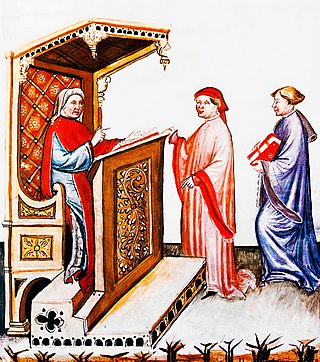
Abū 'l-Ḥasan al-Muḫtār Yuwānnīs ibn al-Ḥasan ibn ʿAbdūn ibn Saʿdūn ibn Buṭlān known as Ibn Buṭlān was a physician and Arab Christian theologian from Baghdad during the Abbasid era. He left his hometown for travels throughout the Iraq, Syria, Egypt, and Asia Minor during which he practiced medicine, studied, wrote, and engaged in intellectual debates most famously the Battle of the Physicians with Ibn Riḍwān. He was a first-hand witness of the Schism of 1054 in Constantinople, contributing a work to the discussions surrounding it for Patriarch Michael I Cerularius. After his time in Constantinople he remained in the Byzantine Empire, becoming a monk in Antioch during the end of the Macedonian Renaissance.
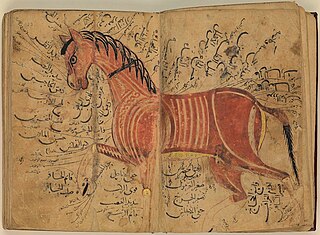
Furūsiyya is the historical Arabic term for equestrian martial exercise. Furūsiyya “Knighthood” is a martial tradition dating back to Pre-Islamic Arabia

Christian influences in Islam can be traced back to Eastern Christianity, which surrounded the origins of Islam. Islam, emerging in the context of the Middle East that was largely Christian, was first seen as a Christological heresy known as the "heresy of the Ishmaelites", described as such in Concerning Heresy by Saint John of Damascus, a Syriac scholar.

The Islamic Golden Age was a period of scientific, economic and cultural flourishing in the history of Islam, traditionally dated from the 8th century to the 13th century.

Arabic miniatures are small paintings on paper, usually book or manuscript illustrations but also sometimes separate artworks that occupy entire pages. The earliest example dates from around 690 AD, with a flourishing of the art from between 1000 and 1200 AD in the Abbasid caliphate. The art form went through several stages of evolution while witnessing the fall and rise of several Islamic caliphates. Arab miniaturists absorbed Chinese and Persian influences brought by the Mongol destructions, and at last, got totally assimilated and subsequently disappeared due to the Ottoman occupation of the Arab world. Nearly all forms of Islamic miniatures owe their existences to Arabic miniatures, as Arab patrons were the first to demand the production of illuminated manuscripts in the Caliphate, it wasn't until the 14th century that the artistic skill reached the non-Arab regions of the Caliphate.
Ibn Al‐Raqqam Muḥammad Ibn Ibrahim Al‐Mursi Al‐Andalusi Al‐Tunisi Al‐Awsi also known as Ibn Al‐Raqqam was a 13th century Andalusian-Arab astronomer, mathematician and physician; but also a Sunni Muslim theologian and jurist.
The Tawḥīd al-Mufaḍḍal, also known as the Kitāb fī badʾ al-khalq wa-l-ḥathth ʿalā al-iʿtibār, is a ninth-century treatise concerned with proving the existence of God, attributed to the early Shi'i Muslim leader al-Mufaddal ibn Umar al-Ju'fi. The work presents itself as a dialogue between al-Mufaddal and the Shi'i Imam Ja'far al-Sadiq, who is the main speaker.
Ḥabīb ibn Bahrīz, also called ʿAbdishoʿ bar Bahrīz, was a bishop and scholar of the Church of the East, famous for his translations from Syriac into Arabic. He also wrote original works on logic, canon law and apologetics.
